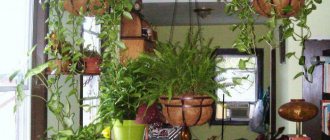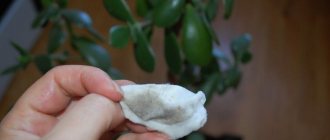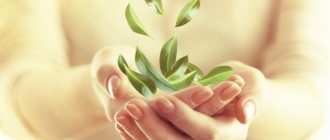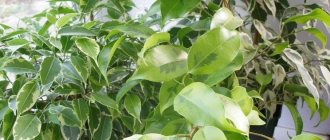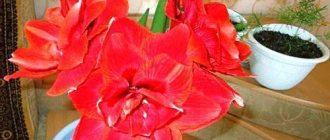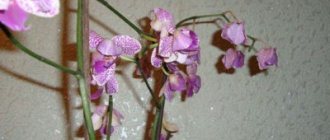Indoor flowers are not just decoration. They are saturated with the energy of the house and are often attached to one or another home. That is why you should be careful and follow useful signs.
Experts in the field of bioenergy are confident that correctly selected flowers can improve the home aura, get rid of negative flows and make energy positive.
Signs about indoor flowers
Signs say that it is better not to take flowers that feel bad in someone else’s house. It often happens that they do not bloom, wither or get sick. Folk signs say that in such a house plants try to neutralize negative energy. You should not take such plants into your home, because they can infect your home with negativity.
Flowers will grow well if you take a shoot without asking. Of course, this doesn’t always work out, and it’s easier to ask, so such a sign is not relevant in the modern world.
You can take other people's flowers if it is a gift . Of course, you must know this person and trust him, because flowers convey evil eyes, curses, and damage. If a kind person gives you a flower, try to accept this gift. The flower must be in a pot.
Ancient signs say that you should not accept a flower as a gift on Mondays. On this day, fears and negative thoughts can be transmitted with a flower. It is best to accept such a gift or give it on the weekend.
You should not accept or take other people's indoor flowers as gifts that are no longer young. They get very used to a certain environment, so it will be difficult for them to readjust.
It is not advisable to accept a flower as a gift if you are sick . A plant can both give a person vitality and draw it out of him. It's better not to take risks.
If you accept a flower as a gift from someone you don’t completely trust, it’s better to pay it off . You need to give something in return - a couple of coins or some kind of return gift. In general, in ancient times, in many cultures, any sudden gift from a stranger was required to be given some kind of response, a ransom. This is believed to remove all negative effects.
Which flowers can be taken and which ones can’t?
According to experts from the website dailyhoro.ru, some flowers can be given and accepted as gifts, while others are better not to be given.
Violet. Violet should only be given to relatives, because it is very sensitive to changes in the energy background. It will be even better if you give it to someone who lives in the same house or apartment with you. This flower acts as a happy family talisman, so it is better to give a violet to strangers only if it has just been purchased in a store.
Orchid . This plant brings prosperity, love, passion to the house. This is the strongest talisman and source of happiness, so it is better to give it with great love and respect. It is very good to give an orchid to a young lady, as this flower helps to increase self-esteem and self-confidence. It is a resilient plant that makes a difference to its environment, but is not dependent on the energy of the home. It is difficult to damage him.
Roses. It is better not to give roses of any type. Moreover, it is better not to take these indoor flowers even for a while. Rose feels calm in one place, she becomes attached to it, slowly increasing her energy. She can wither and die, but even if she doesn’t do this, she will no longer provide any benefit other than aesthetic ones.
Other flowers can be given and accepted as gifts calmly, but it is better to pay off and be careful. Flowers can be spellbound to cause damage, so when accepting them from an unfamiliar or negative person, it is better to think twice.
Try to buy plants yourself. Check out the indoor flowers that attract love and happiness into your home so you know which ones will suit you best. Good luck, and don't forget to press the buttons and
When purchasing another flower, we do not even know about some of the harmful properties of indoor plants, and then suddenly we notice emerging health problems. If a small child or animals live in the house, then you need to pay special attention to the choice of indoor flowers and plants in order to protect their livelihoods. Some types of plants contain poison in their sap or release harmful substances into oxygen.
In addition to plants that are not recommended to be kept at home, some flowers have an adverse effect on the human body. In this case, you need to choose the right location for the future green resident, without placing it in the bedroom or, conversely, in the kitchen.
There are a huge number of disputes and disagreements about dangerous plants in the house. All the sayings are mixed with various signs that can ultimately confuse a novice gardener. In this article we will look at plants with which you need to be careful and be aware of the likely consequences for the body and for energy.
List of poisonous plants
This group of plants includes those species that should not be kept at home, especially in the presence of animals or children, due to their extremely dangerous properties. A child, like a pet, can be poisoned by such flowers or get burns if handled carelessly.
If there are no children or animals in the house, then take precautions when caring for such plants. Be sure to use gloves when working with these colors and wash your tools thoroughly. Never trim these flowers with a knife meant for eating in your kitchen.
Consider this group of plants:
- Dieffenbachia.
A popular indoor plant that attracts gardeners with its huge yellow-green leaves that form a fluffy crown. The flower is dangerous because of its juice, which is released when the leaves or stem are cut. If a pet or child decides to chew any part of this flower, the juice that enters the body will cause severe poisoning. In addition, Dieffenbachia juice causes burns and irritation to the skin. - Oleander (Nerium oleander).
Popular for its bright crimson flowers. Ingestion of oleander juice into the body causes blindness. The smell of a flowering plant contributes to dizziness and poor health. - Euphorbia (Euphorbia).
This plant is represented by a huge number of species and various forms, so it cannot be described unambiguously. Many representatives are similar in appearance to cacti and have spines, the injection of which is also dangerous for a living organism. Euphorbia contains white sap in its stem and leaves, which causes burns and irritation on the skin. If it enters the body it causes poisoning.
Should a deceased person's bed be thrown away?
Those things on which a person died (bed linen, bed
or sofa, clothes) are subject to mandatory destruction, since they absorb the energy of torment and death. As a rule, such items are burned or, at a minimum, taken to a landfill. All other property can be left or given away.
Interesting materials:
What do masks give on Instagram? What do views on Instagram give? What do reactions to Stories on Instagram give? What if your Instagram story disappeared? What if there is an error on Instagram? What if the user says not found on Instagram? What is this Instagram feed? What is Instagram? What is better Instagram or YouTube? What can you write in Bio on Instagram?
List of plants that need to be treated with caution
There are a number of indoor flowers that can harm the human body only if they are placed incorrectly in the house. In addition, some plant varieties cause allergies or minor illnesses. The list of these plants is as follows:
- Lily (Lilium).
A flower loved by many with a tart aroma. It is because of this concentrated odor that they are not recommended to be kept in the bedroom, as they can cause insomnia. At night, lilies release a lot of carbon dioxide, so you can wake up in the morning with a headache and tired. - Ficus (Ficus).
A green lush plant with oblong leaves. Ficus is not very dangerous for humans, but is more capable than others of causing allergic reactions. - Orchid (Orchidaceae).
A beautiful plant characterized by unusual flowering of various shapes and colors. It is better to place such a flower near your workplace because it stimulates the nervous system. If you place an orchid in the bedroom, it will lead to sleep disturbances.
We have a whole section on our website dedicated to orchids. Look, maybe you will find a plant that suits you, they have beautiful flowers!
A flower that amazes with its inflorescence with a large number of small flowers forming a “cap”. The color varies from pink to blue. Hydrangea releases particles that can cause allergies.
It is a perennial plant with a stem 45 cm high; white flowers form at the top. It has a very sweet and strong aroma. The plant releases particles that greatly enhance the sense of smell. It is not recommended to keep such a flower for people with heart disease and hypertension. With such diseases, the aroma of the flower can cause dizziness and loss of mood, even depressive states.
All flowers with a strong aroma should be placed in thoroughly ventilated areas. Then problems with poor health will not arise.
Plants-amulets for the garden
Not only the house needs protection, the garden also needs to be protected from negative external influences. The following plants cope well with this task:
- Mint . The pleasant-smelling sprigs of this protective herb create a protective layer around the yard. It also attracts happiness, luck, and financial well-being.
- Kalina . In the old days, viburnum was planted in every yard - this is the strongest amulet. But you need to carefully look after it. The more love you show to a beautiful tree, the more it will protect you from the evil eye.
- Mac . The peculiarity of poppy seeds is that they are collected in a type of capsule. In ancient times, people believed that all evil intentions were trapped in these boxes, as if in a prison. Mac does not allow evil intentions to reach your home, and intercepts all negative energy.
Folk signs: what is possible, what is not?
To trust folk signs or not is a personal matter for everyone. It is worth remembering that most often signs arise on the basis of many years of observations of ancestors. Let's consider what the appearance of some indoor plants in the house entails:
Cacti are an unfavorable plant for the home. It is believed that the presence of a cactus in an apartment turns a husband into an alcoholic. There is a second sign that says that in a house where there is a cactus, a girl will not get married successfully or will not meet her chosen one at all. The cactus also has a bad effect on relationships between family members.- Ferns take away vitality from a person, being an energy vampire. In a house with a fern, a person will feel constantly tired, inactive, and sleepy.
- Ivy and climbing plants, according to popular belief, scare away men. In a house where there are such plants, a man will constantly strive to go somewhere. In addition, ivy negatively affects the state of mind, depriving a person of optimism and balance. It is best to keep such plants outside the house. So, ivy will act as a protector.
- Dieffenbachia is dangerous for its poisonous properties, and also takes away the health of household members.
Mother-in-law's tongue is a plant that has practically no stem, with elongated longitudinal leaves with a bright green color. It is believed that the presence of such a flower in the house leads to loneliness and the inability of a girl to get married. The plant negatively affects female power, so it is dangerous to keep it in the bedroom. The flower seems to “drive” men out of the house.- Sansevieria is a curious plant that looks like the tail of a fish. For this reason, it is also nicknamed “pike tail”. The leaves of the flower, painted green, have such a bizarre shape. The plant blooms and has a pleasant aroma. But, according to signs, it negatively affects family and personal life. The presence of this flower in the house leads to loneliness.
- Palm trees often decorate the interiors of many rooms, but it is better not to place such a flower in your home. The palm tree contributes to grief in the family if it was given to you. Save this plant for office spaces or other places.
- Ficus can cause allergies, but in addition, it is believed that the flower negatively affects the presence of children in the house. If you want a child, then this plant is not worth purchasing. There has been controversy about ficus for a long time. There is a completely opposite opinion about this plant. It says that ficus solves problems of infertility and promotes family well-being.
Amulet for health
Aloe Aloe
is a real home healer . A plant known to almost everyone, aloe is not particularly bright or spectacular, but its beneficial effect on the human body can truly be called magical.
Various energy vibrations enter the house through the front doors, which can be harmful. And if the protective field of the apartment is not strong enough, then the negative energy affects every family member.
In this situation, aloe will help - the plant will perfectly cleanse your home, strengthen spatial energy, and improve health.
Flowers that should be grown according to signs
There are many signs about indoor plants, some of which are puzzling. For example, it is believed that flowers will grow and bloom better if you do not buy them in a store, but steal them and pinch off a twig from a beautiful, healthy bush.
To “mitigate” the sin, leave some coins for the mother plant.
If indoor flowers consistently die with good care, this indicates poor energy in the room or problems in the life of the owner. If a plant stood in the house for a long time and died before reaching its allotted lifespan, this is a bad omen, a warning about a possible serious illness in one of the household members.
Some flowers absorb a lot of negativity and die, taking energy dirt with them.
For an office, the death of a flower in a pot is a harbinger of changes in the company.
There are many beliefs about flowers that should not be kept at home. According to folk superstitions, the list of prohibited plants includes vines and climbing indoor flowers - they are considered “husband busters.”
It is not advisable to accept indoor flowers in pots as gifts. Together with the plant, the donor may get rid of his problems, betray them. For each flower pot, give a symbolic fee, then “the plant will decide” that it was bought, and the new owner does not need the hardships of the previous owner.
Having heard a lot of signs and superstitions about which flowers should not be kept in the house, do not rush to throw out your pets. If, before receiving negative information, you did not experience discomfort from being next to your “green friend” and were happy about its flowering, you can ignore the frightening warnings.
Charms against envy
Azalea
Azalea repels the thoughts of envious people and helps to distinguish truth from lies. The world around us is full of unkind people - many people take joy in the failures of others, they are fueled by the energy forces of their friends.
To protect yourself from such negativity, you should use the miraculous effects of azalea. In addition to protection from external evil, it helps to achieve internal balance, get rid of fatigue and nervousness. If you decorate your home with a cute azalea, you will forever forget about uncertainty and fear.
What flowers can you keep at home?
The question of whether it is possible to keep a rose at home relates rather to the Chinese beauty. There are frightening signs about hibiscus or Chinese rose. There is an opinion that the appearance of flowers on a plant is a signal of the imminent death of one of the household members or their loved ones. But with good care and positive energy, hibiscus can bloom all year round, and there will be no tragic consequences in this case.
It is recommended to keep the Chinese rose in the house if the relationship between the spouses has “subsided”. The flower will help bring back faded passion. Positively minded people can safely acquire hibiscus. Positive interpretation of plant flowering:
- For a young couple - an addition to the family;
- For a girl of marriageable age - a quick wedding;
- For an older lady - rejuvenation.
As for thorny plants (cacti, roses, rose hips), they can block positive energy and do not contribute in any way to creating a pleasant atmosphere.
But signs about flowers in the house, on the contrary, recommend keeping a rose in a young girl’s room. The rose helps to maintain the chastity of the young lady, and attracts the groom to the young lady of marriageable age. In the couple's room, the queen of flowers harmonizes relationships.
Amulets from damage and the evil eye
- Geranium . It has the strongest magical effect on human housing. Its specific smell is known to absolutely everyone - it is it that serves as a reflector of any external negativity.
- Cactus . There is a controversial opinion about the benefits of cacti in the home. Some are inclined to assume that its prickly surface brings discord in the family and constant quarrels. But I personally have a different opinion: if you place the plant in the corridor or on the windowsill, then its thorns will serve as a barrier to the negative thought forms of your enemies and envious people. It will be difficult for bad people to enter your home.
- Rose . The Queen of Flowers, who can lift your spirits, improve your well-being, even attracts love. But not everyone knows that the thorns on its stem also serve as excellent protection against thoughts sent by ill-wishers.
- Tradescantia . This flower is suitable for the kitchen - it cleanses space, scares away enemies, and renews the energy system in the house. Tradescantia will open your eyes to the people around you and help you understand who is a real friend and who is just pretending. This magical flower helps to “weed out” your surroundings and leave only devoted and true friends around you.
Plants that bring money
Home flowers not only delight with their appearance, but also attract monetary luck. Among these plants:
- crassula (money tree);
- zamiakulkas, geranium;
- Dracaena sandera (lucky bamboo);
- lemon;
- pachira;
- scindapsus;
- aucuba;
- bougainvillea;
To enhance the magical power, the selected plant should be placed in the south-eastern part of the house and taken good care of.
When choosing a green “money magnet”, pay attention to other properties of plants. For example, the scindapsus liana is included in the list of flowers that cannot be kept in the house; it is considered a “husband-killer.”
Crassula
Do you want to attract wealth to your home? Plant Crassula! This succulent with fleshy leaves is called the money tree. Its oval leaves, falling off, dry out, acquire a silvery tint, and become like coins. There are signs on how to plant Crassula correctly so that it will bring you financial success:
- You need to pinch off a shoot from a bush from rich people, and not buy a ready-made plant.
- Crassula must be planted in a red pot, or at least in a green or black pot.
- At the bottom of the pot with the plant during planting, you should place several large coins.
If the succulent “deigns” to bloom, the owner can expect an improvement in his financial situation. But if the Crassula leaves fall off or the plant gets sick, this is a harbinger of waste of money in the family, ruin. You should get rid of the flower pot or pay close attention to the ratio of income and expenses.
Zamiakulkas
This plant is recommended for lovers of international currency. Zamiakulkas is called the “dollar tree” and the plant is believed to bring financial profit.
It is worth keeping this “exotic” in the house not only for money magic rituals, but also for interior decoration. The ever-shiny leaves noticeably decorate the room and improve the mood of the inhabitants.
cacti
Oddly enough, cacti are also considered money plants. The prickly inhabitants of window sills have an aggressive energy that increases the business acumen of the plant owner, improves mental abilities and prevents “squandering” money. And according to popular belief, cacti scare away thieves.
Dracaena Sandera
Lucky bamboo is a symbol of financial well-being. To activate magical influence in the monetary sphere, you need to plant 5 stalks of Sandera in one pot.
If you need to attract happiness, 3 stems will be enough; to attract good health, 7 stems. Well, if you need everything at once - and this is possible, plant 21 stems in one container.
Dangerous flowers containing poison
What flowers should not be kept at home
Among the most dangerous are more than 15 varieties of flowers that people unknowingly grow at home.
Often such plants have an attractive appearance, so it is not always possible to understand that the green mass contains toxic substances.
35 flowers and plants that should not be kept at home:
- Dieffenbachia;
- Oleander;
- Croton;
- Spurge;
- Ivy;
- Mimosa bashful;
- Azalea;
- Philodendron;
- Monstera;
- Adenium;
- Nightshade;
- Stellera dwarf;
- Primrose;
- Alocasia;
- Trichocereus;
- Gesner Tulip;
- Aglaonema;
- Cyclamen;
- Browallia;
- Gloriosa;
- Spathiphyllum;
- Poinsettia;
- Begonia;
- Pachypodium Lamera;
- Clivia;
- Ficus;
- Fern;
- Lily;
- Orchid;
- Hydrangea;
- Dracaena;
- Crassula;
- Geranium;
- Rose;
- Sansevieria.
Dieffenbachia
It has a bright appearance: it reaches 2 m in height (some of the species), the leaves are large, variegated yellow-green.
Dieffenbachia
grows quickly and loves a humid climate. These signs make Dieffenbachia attractive to gardeners, but when the leaf is damaged, poisonous juice is released.
If it gets into the child's body, there is a high risk of poisoning. The plant can burn the outer coverings. The poison causes burns and irritates the outer skin.
Oleander
The shrub can reach 5 m in height, but indoor varieties are small - up to 50 cm. Its leaf shape differs - they are narrow and long.
Oleander
Oleander flowers come in different colors. Among them there are flowers with double petals. Ovaries appear during the warm period, but at different times, depending on environmental conditions.
The danger of oleander lies in the high probability of poisoning. A negative reaction can occur upon contact with any part of the plant.
Croton
The flower looks attractive: a lush bush, variegated leaves with patterns of different shades. Croton can reach 2 m in height, but at the initial stage of development it is compact.
Croton
The shades, like the shape of the leaves, are always different. Thanks to this, many gardeners do not pay attention to the poison contained in the plant and grow it at home.
Croton's ability to mutate also seems attractive; there is still no explanation why the leaves take on different shapes.
Be careful: The toxic substance, if ingested, causes vomiting, diarrhea, and contact dermatitis. You should not inhale it or otherwise come into contact (while caring for the plant).
Spurge
Presented in a large number of varieties. The flower received its name due to the release of a substance of a special structure and external characteristics: viscous, white, reminiscent of milky juice.
Euphorbia
Among the varieties of milkweed, there are those that contain thorns. Given its dangerous properties, the flower has gained a reputation for bringing misfortune.
Keeping it at home is also dangerous because of the poisonous juice contained in the green mass.
Euphorbia is small in size, found in the form of a bush, less often in the form of a tree.
The stems and leaves are often fleshy, differ in shade, and in some varieties you can see a specific pattern on them. Euphorbia blooms, the shade of the petals varies depending on the species.
Ivy
The name of the plant is reminiscent of the vines that are found on the facades of buildings. But there are also indoor flowers of this species.
Among them are hedera and others. They are evergreen shrubs and climb, but this does not prevent you from growing such plants at home.
Ivy
You just need to give the desired shape to the vines. The flower loves cool, moderately humid air and needs good lighting.
The leaves have a specific shape: three- or five-lobed, different colors; some types of ivy have a noticeable pattern of a different color.
The length of the vine sometimes reaches 20 m. There are also species whose roots develop above the ground. They act as a support for the vines.
Expert opinion: The plant is easy to grow, which attracts gardeners, but some varieties contain poison. After flowering, berries may appear; they are the most dangerous for humans.
Mimosa bashful
The flower is known for its connection with the energy of the earth's core, which is expressed in the constant movements of the leaves, which do not depend on lighting, watering or other external factors.
Mimosa pudica
The flower received its name due to its ability to close its leaves when touched or exposed to another irritant. This is a perennial plant reaching 70 cm in height, often smaller, but there are also varieties up to 1.5 m.
The leaves have sensory areas that respond to pressure. The ability to roll leaves is due to the need to receive moisture.
It reaches the membrane at the base of the leaf in a special way. When the water drains, it curls up, keeping the liquid inside and nourishing the plant.
Upon contact, an odor of hydrogen sulfide may occur. But that's not all the dangers. Mimosa is a poisonous plant. It is dangerous to grow it at home, as there is a risk of poisoning.
Dangerous for animals: If the plant is found by animals in the pasture, they can also receive a dose of poison, which will lead to negative consequences.
Azalea
The plant is a perennial and belongs to the Heather family. At home, flowers are found in the form of shrubs, up to 50 cm in height.
Azalea
The color of the petals can be different: white, pink, red, purple. The leaves are unusual - elliptical in shape with a glossy sheen.
When growing at home, it is necessary to create special conditions: the air must be cool and thoroughly humidified.
What is the danger: Azalea contains a neurotoxin - andromedotoxin. Moreover, it has a narcotic effect.
Philodendron
Philodendron is native to countries with tropical climates. There are more than 900 species. Philodendron is a perennial plant. It is distinguished by its unusual leaf shape.
Moreover, it varies depending on the type of flower.
Philodendron
The main source of nutrition is the root system. The stems are fleshy and tend to become woody.
In its natural environment, Philodendron has a significant leaf length - up to 2 m. Climbing or warty Philodendron is grown at home.
However, this beautiful plant is poisonous.
The juice contained in the green mass can cause severe inflammation of the mucous membranes upon contact with it. Even bloody discharge appears in these areas. And when it enters the stomach, the poison provokes a disorder.
Monstera
The flower comes from countries with a tropical climate. Reaches a significant height, the length of the leaves is significant - up to 45 cm.
Monstera
The shape is different, depending on the type of flower. But most often you can see numerous cutouts on the leaves.
The houseplant, like its wild varieties, reaches the ceiling when grown indoors. The flower does not tolerate direct exposure to sunlight, but prefers high humidity.
Monstera is a poisonous plant that releases a toxic substance that can cause a strong negative reaction, which is due to the content of oxalate formations.
Shrub Adenium
Shrub or woody succulent (depending on the variety). House plants reach 35 cm in height. Moreover, the trunk is quite thick, while the leaves, on the contrary, are often small.
Adenium
Flowers of different shades, sometimes white and crimson. The popular name is “desert rose” .
Adenium loves warm climates, sometimes blooms for 6 months, but more often in spring or autumn. Adenium comes from the tropics, so it is a heat-loving flower.
Contains milky juice, like spurge. But such a plant is distinguished by the high toxicity of the secreted substance. For this reason, care should be taken to study which flowers cannot be kept at home; indoor flowers of other types are more preferable.
Nightshade
The flower is represented by a large number of species - up to 1700. It comes from countries with a tropical climate, but also grows in regions with a temperate climate.
Nightshade
You can find trees of this group, as well as shrubs. Among the varieties there are also domestic ones. Nightshade is distinguished by its unusual development - it begins to bloom in February, when many plants have not yet completed their dormant period.
Nightshade differs in its stem: it can be erect, lying, or creeping. The flowers are collected in panicles or racemes and may be covered with shields.
Varieties containing poison in all parts of the plant can be grown at home, but eating its fruit is prohibited. They are also bitter - this is a natural defense.
Expert opinion: As long as the plant is not damaged, it will not cause harm. But it is better to care for it with impenetrable gloves.
Stellera dwarf
The plant bears fruit. It is classified as perennial. Moreover, Stellera is distinguished by a thick root, many leaves and unusually shaped flowers that rise above the erect stem.
Stellera dwarf
Note: The plant is poisonous, contains anthraglycosides, organic substances (acids). Despite this, in some countries it is used in folk medicine (stellera has a laxative effect and helps with constipation).
Primrose
Primrose prefers a humid climate. Most often it blooms in the spring, but among the varieties of primrose there are summer-blooming ones.
Primrose
The plant is a perennial, reaching a height of 30 cm. It is distinguished by a variety of shades of petals: yellow, burgundy, blue, white, etc.
It prefers a temperate climate, so it is often found in the countries of the Asian and North American continents. Flowers are formed in inflorescences - there are up to 20 in one.
What is dangerous for humans: The plant protects itself - upon contact with the leaves, signs of dermatitis may appear. This is due to the poison content in the glandular hairs.
Alocasia
Alocasia reaches 2 m in height. There are small varieties - up to 40 cm. The fact that the plant is poisonous can be guessed by the shape and color of the leaves.
Alocasia
They are spiky, with bright, contrasting colors. The plant comes from countries with a tropical climate, so it prefers hot, humid air. Alocasia is a perennial flower. He is considered one of the most dangerous.
Expert opinion: Upon contact with such a plant, the process of destruction of the outer integument begins, and bloody discharge with an unpleasant odor appears.
Trichocereus
The cactus is represented by a large number of species that differ in external characteristics. In the natural environment it reaches several meters (sometimes up to 12 m).
Trichocereus
At home, it is not possible to grow a cactus larger than 1 m. What unites different types of Trichocereus is its round shape and ribbed surface.
Branches may appear - lateral branches. During the flowering period, a tube grows, with a flower on it. A special feature of the cactus is the time it opens - at night, and the smell is very pleasant.
The cactus is known as a hallucinogenic plant. The secretion of poisonous juice is a way of protection.
Gesner Tulip
The height of the flower is up to 40 cm. It was included in the Red Book due to its gradual disappearance in nature.
Tulip of Gesner
There are plain tulips and variegated ones (of different shades). They begin to bloom towards the end of spring.
Seeds are used for propagation, which distinguishes the Gesner tulip from representatives of other species (garden).
Why the flower is dangerous: The advantage is the long flowering period - up to 3 weeks. It is believed that staying in the same room with such a plant can cause baldness.
Aglaonema
It belongs to the subshrubs and is an evergreen flower. It is distinguished by large leaves - 15 cm long, of different shades, depending on the species.
Aglaonema
Reaches 70 cm in height. You can’t count on flowering, because this rarely happens. But sometimes, with proper care, an inflorescence ear still appears.
Only the flowers on it are rather inconspicuous. The plant bears fruit. Despite the fact that the flower does not emit a toxic substance, it is still recommended to come into contact with it with caution.
The fruits are more dangerous; they contain juice that can cause burns to the mucous membrane.
Cyclamen
Cyclamen is called Alpine violet. Its flowers appear on thin stalks. Cyclamen is attractive, and thanks to its flowering in the autumn-winter period, it will delight household members when most plants are in a dormant period.
Cyclamen
There are different types of this flower, which determines the shade and shape of the petals. When grown indoors, it prefers cool air.
Despite its attractive appearance, you cannot behave carelessly next to such a flower. There is a risk of burns to the mucous membranes. At the same time, the temperature may rise significantly, making breathing difficult.
Be careful! The most dangerous parts of the plant: seeds, roots.
Browallia
The attractiveness is due to the many small flowers that appear against the background of dense green mass. The plant has a small height - up to 30 cm.
Brovallia
Thanks to its modest beauty, the flower can compete with bright exotic varieties. The leaves are pointed and small. Their rich color emphasizes their attractiveness.
The flowering period begins in summer, but continues until the first frost. All parts of the plant pose a threat to living things. According to experts, you should not allow contact with it without protecting your skin.
Gloriosa
Gloriosa is called the queen of flowering vines. It is considered the official flower of Zimbabwe, and it belongs to the vines, the length of the stems does not exceed 50 cm.
Gloriosis
The root system develops in a horizontal plane. During the flowering period, the plant can be mistaken for a lily, due to the similarity of the petals.
They are distinguished by a wavy edge and the ability to change shade. Initially the flowers are yellow, gradually turning red.
Gloriosis is dangerous to humans. It is not recommended to grow it at home if there are children or any family members suffer from allergies.
Expert opinion: If the poison contained in all parts of gloriosa enters the body, diarrhea, vomiting, weakness may appear - all signs of allergies and poisoning.
Spathiphyllum
Spathiphyllum does not require careful care, but at the same time, without proper attention, the flower may die.
Spathiphyllum
Spathiphyllum has a bright appearance: it has pointed large leaves, the spathe of the yellow inflorescence is characterized by a white/green color.
The plant prefers moderate air temperatures. Experts do not recommend placing it in the shade; the best place is a south-facing window, and at a distance of 1-2 m from it.
Spathiphyllum is dangerous, or rather, its juice: when it gets on the mucous membrane it causes irreversible processes, and on the skin it provokes the appearance of ulcerative formations.
Poinsettia
Poinsettia belongs to the Euphorbiaceae family. It is distinguished by its attractive appearance and the appearance of flowers at Christmas.
Poinsettia
Poinsettia in natural conditions can grow up to 4 m, but at home it barely reaches 0.5 m. The bracts and leaves have a similar shape - wide, pointed.
They differ in shade. Thus, the leaves are rich green, and the bracts can be of different colors (white, yellow, red), which creates contrast and at the same time attracts attention with the unusual color.
Expert's opinion: Poinsettias do not emit a dangerous odor, but they do contain poisonous sap. The substance is released if part of the stem is broken. As soon as a whitish liquid appears, you should wash your hands.
Begonia
It is somewhat reminiscent of pounsettia, but instead of bracts of a contrasting tone, inflorescences of a bright shade appear. They are concentrated in the upper part, deep green leaves appear at the bottom.
Begonia
There are about 2000 species of this plant. The majority are native to countries with a tropical climate. Begonia needs a period of rest.
Among the varieties there are bushy, tuberous, evergreen flowers. The height of the plant, as well as the shade of the flowers, differs and depends on the species.
Why it is dangerous: If you accidentally consume part of a begonia, you can get swelling of the larynx, but the pathological process begins with a burn of the mucous membranes.
Pachypodium Lamera
In its natural environment it grows in areas with an arid climate. There are only 23 species of Pachypodium. Among them there are cactus-like plants. But there are also small bottle-shaped trees.
Pachypodium Lamera
The main feature is the presence of spines. The plant got its name due to the peculiarity of its appearance: the leaves grow on a thick stem.
In the natural environment, the height reaches 8 m. At home, pachypodium is usually grown in small sizes - up to 1 m.
The sap is usually clear, not milky, like many poisonous plants. But this liquid still poses a danger. However, it causes harm provided that the skin is damaged.
Clivia
Clivia is native to South Africa but is native to temperate climates. The flower is attractive and does not require careful care.
Clivia
Main characteristics: long narrow leaves, bright flowers. Moreover, the plant improves its characteristics as it develops.
The lifespan of clivia is 40 years. Flowering begins in late winter, early spring.
Expert opinion: Clivia belongs to the group of plants with the loud name “killers”. If the poison contained in the roots and leaves enters the child's body, it can cause paralysis.
Plants for family well-being
If you are looking for a loved one, and are already losing hope of luck, urgently start growing indoor flowers, plant at least one plant that can attract prosperity to your personal life. And there are many such indoor flowers.
Spathiphyllum
Topping the list of plants that bring success in love is the “female happiness” indoor flower. It is recommended to grow it for single people, especially unmarried females.
Experts in folk superstitions are convinced that after spathiphyllum is placed in a home, following the flower:
- a loved one will appear in the house;
- mutual understanding and peace will reign in the family;
- a child will be born to a couple who could not have children.
Anthurium
The “pair plant” for spathiphyllum has similar properties only in relation to men. It is not for nothing that it is called “male happiness.” If your loved one has become depressed and passive, place an anthurium in the marital bedroom. The plant will fill the house with positive energy, the man will perk up and remember that she is the head of the family, and will begin to protect and protect the woman.
Another plant that will help a childless family have a child. To do this, you need to make a garland of 32 petals of an indoor rose (preferably bright red or pink), and hang it over the marital bed. You need to use flowers that were planted in the house at least a year ago. You can also brew tea from its petals to strengthen marriage bonds, and drink a drink of love between your wife and husband.
Oxalis
Oxalis quatrefoils are a symbol of good luck. It will be useful for single women to make their dream of meeting a loved one come true. Spouses next to oxalis will find mutual understanding and be able to save the family.
Calathea
The homemaker protects spouses from adversity and is a symbol of a happy family life.
Aichrizon
The “Tree of Happiness” will protect your home, ward off unworthy people, and bestow you with luck and success.
This miniature evergreen tree is often given to newlyweds on their wedding day as a symbol of eternal love and a strong marriage. Myrtle can bring quick love to an unmarried young lady.
Chlorophytum
“Green air conditioner” will not only freshen the air in the room, but also help to find stability in the relationship of a married couple. It helps lonely people find harmony by sorting out their own thoughts.
Violet
A symbol of inexhaustible love, affection and mutual understanding. In a house where scandals do not subside between husband and wife, reproaches are constantly heard, it is necessary to grow Saintpaulia. Delicate flowers will help improve family life.
What plants should an unmarried woman not have?
Women, especially those who have already been married, know exactly what kind of partner they would like to love. But the problem is that no matter how hard they try, nothing good comes of it. Few realize that it may not be about them, but about the plants that drive away all the profitable suitors.
Florists have compiled a list of flowers that are best kept in the garden:
Chinese rose.
Fern.
Upstart.
Cactus.
Lianas.
Ferns are very treacherous flowers. Although they do not bloom, they are loved for their luxurious green leaves. There is no doubt that this flower is perfect for a garden, cottage, secluded corner in the front garden, or decorating the grave of a beloved relative. But don't put him in an apartment. He draws out all the strength and beauty of a woman. Fern is especially dangerous for those ladies who are over 35. They do not have the opportunity to make a mistake with an unsuitable partner. So throw this plant out of the house if you want to find family happiness.
Upstart, zebrina, vines destroy the beauty of women and make impotent men. Remove these plants from your apartment and life will improve.
interesting and detailed about: Kalanchoe signs
Plants that enhance women's attractiveness
Let's list the plants that fill women with the energy of attractiveness so that not a single worthy man passes by. Interestingly, these flowers scare away beggars and unworthy guys who do not want a relationship, but simply to take advantage of a woman.
Aloe
Enhances beauty and removes all ill-wishers from the road. If you keep an aloe bush in your house, a woman will very quickly find love and family happiness. The flower will protect from troubles, cleanse the aura, and help improve relationships if partners have quarreled.
Aucuba
Helps not only in career, but also in love. It makes women bold and ready to enter into a relationship. Attracts a rich man. Helps in marriage to have children soon.
Ginura
An unusual exotic with purple foliage will preserve women's health, improve the aura, and cleanse the room of negativity and the evil eye. In an apartment where ginura grows, there is always happiness and prosperity.
Gloxinia
Bell flowers fill your wallet with ringing coins. This plant gives women natural beauty, especially if they wash themselves with a decoction of the flowers. The flower will help improve relationships with people and resolve any conflicts.
Oxalis or oxalis four-leaf
This is a flower of good luck. It almost instantly improves the life of any person, and gives ladies women's health. If you have no luck with guys, eat an oxalis leaf on the full moon and say: “A tree with fruits grows on Buyan Island. I will live and not bother if a man comes to me. Key, lock. As it is said, so it will be.” Before you know it, a good man will meet you.
Signs from plants about the weather
It is easy to foresee any atmospheric phenomena in advance, since everything that happens on our planet occurs according to certain laws. Plants are excellent natural barometers. By their condition, you can recognize the approach of frost, bad weather or drought. You just need to look at them carefully.
About the onset of heat
Folk signs about the approaching hot weather based on plants:
To the rain and thunderstorm
If it is not possible to find out weather forecasters, trees and shrubs will tell you about the weather patterns for the coming days. Folk signs of inclement weather based on plants:
If you know signs that are not mentioned in this article, we will be glad if you write to us in the comments at the bottom of the page!
To frost or cold snap
| Sign | Decoding |
| Leaves quickly fly away from the trees | Frost will hit in a few days |
| Rowan produces a rich harvest | To the long, harsh winter |
| Thistle grows strongly in the garden | There will be severe frosts in autumn |
| A lot of acorns grew on the oak tree | To long frosts in winter |
| Leaves have blossomed on the cherry trees for the Intercession | A harsh, frosty winter is ahead |
| There are many nuts in the forest, but no mushrooms | For a long winter with lots of snow |
What other trees, shrubs and flowers are weather predictors?
Signs about the weather in different countries of the world
In Japan, a rich grain harvest foreshadows a winter with little snow. In Germany and France, the same thing is predicted by the abundance of mushrooms in the forest in the fall. The Germans say that if the cherries are ripe, the asparagus season is over.
The British learn about the approaching storm by the leaves of the trees. If they turn over due to gusts of wind, a storm will begin. The foliage is swaying slightly, which means there will soon be a lull.
In Belgium they say snow at Christmas means the trees will be covered with leaves at Easter. If the flower stalks of mullein turn to the east, towards the clear sky. To the west - the coming days will be stormy.
Plants that will help you get married faster
Humans are created as paired creatures. And no matter how much a woman insists that she wants a career or business first, family is not the last place for her. What could be more successful in life than finding your man and giving birth to a beautiful child from him in love? Esotericists have named a number of plants that contribute to a successful marriage and help women realize their dreams.
Camellia
It returns sexuality to girls, helping to express it delicately and attract the right man into their lives. This flower remains faithful in marriage and helps to acquire offspring at the right time. Camellia reveals the talents of girls, makes them confident, which guys really like.
Hibiscus
Its flowers make a delicious tea and in the same way, it has a magical effect on a woman’s destiny. This is a symbol of passionate love that can revive faded relationships and make any girl happy. Hibiscus will give a lonely girl the opportunity to find happiness in a relationship. The flower also gives energy for creative ideas and solutions.
Cyclamen
Surprisingly, this winter flower solves any sexual problems in a relationship. It liberates and helps to diversify life in bed for any couple. Cyclamen is especially useful for women in creative professions. If a girl designer holds a flower pot at work, then it will attract rich clients, and maybe even a high-status groom.
Geranium
Although this plant is considered the flower of pensioners, everything is not so simple. Pelargonium, especially its zonal species, supports the health and good mood of any girl, due to phytoncides. And all men will notice a beautiful and cheerful woman, so there will be no end to suitors. In the house, this plant will help create comfort and real family happiness.
Rose
This flower will make a girl very sensual and open to relationships. A rose will help test a guy’s love: you need to ask him to water the flower. If the rose withers after this procedure, it means the guy has bad intentions or is deceiving. The plant also helps improve a woman’s hormonal levels, making her calm, reasonable and beautiful.
Signs on outdoor plants
There are many beliefs that help predict not only the weather, but also other details of the coming months.
Signs for the season ahead
Signs about the harvest
Fortune telling by leaf fall
Aspen
Birch
If the tree produces a lot of sap in the spring, the summer will be stormy.
If the birch tree is the first to become covered with new leaves, the summer months are expected to be dry. This is also indicated by the sign when birch branches become pubescent before maple ones.
Rowan
If the tree blooms for a long time, expect an abundance of mushrooms in the fall.
On rowan trees in spring, flowers bloom in the form of large white caps - a sign of warmth.
Flowering began late - towards the warm autumn.
A rich harvest foreshadows prolonged rains, which will be replaced by severe frosts.
Coniferous trees
Beliefs based on cones
Spruce and pine trees predict the weather. If the scales on the cones are tightly closed, it will be damp in the coming days.
The skin is thick and durable - for a cold, snowy winter.
If you tie onions around the neck of livestock during death, the animal will not become infected.
Thistle
The plant grows abundantly in places where negative energy accumulates. It is believed that thistle marks the border between the worlds of the dead and the living. Plants were planted on the graves of witches and sorcerers to prevent their rebirth.
If they suspected demonic possession, they would lash the person with thorny branches to drive them out.
With the help of thistle they protected the house and animal shed from thieves and unkind people.
As a talisman against pickpockets, the evil eye and damage, people were supposed to carry several dried flowers with them.
Cabbage
To prevent the seedlings from being eaten by worms, they were watered with water from melted autumn snow.
To remove pests from cabbage, they swept it with a broom, which was used to clean the stove before baking Easter cake.
To ensure that the heads of cabbage are large and white, the seedlings are planted during the full moon.
Dandelions
Before bad weather, the flowers close.
If rain is expected, dandelion umbrellas are not blown away by the wind. They seem to be glued to the head.
Fern
The plant can be grown indoors as a pet plant. It protects against the evil eye, damage, and negativity.
If the bush grows lush, material well-being will improve, the owner will experience career growth and an increase in salary.
Finding a fern flower on the night of Ivan Kupala means protection from negative influences. The lucky one will definitely find the treasure.
This plant should not be planted in the garden. Otherwise the crop will die.
You should not bring wild fern from the forest. It attracts bad luck.
Fern leaves were burned to make rain during severe droughts.
